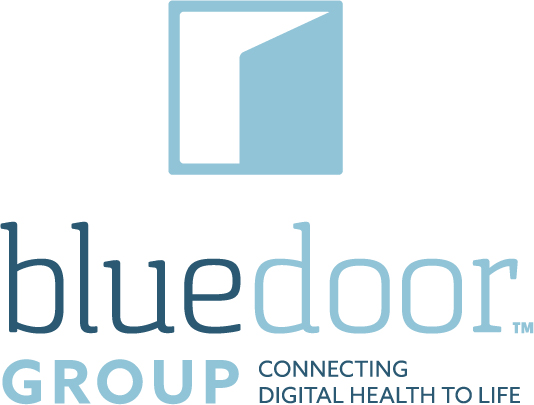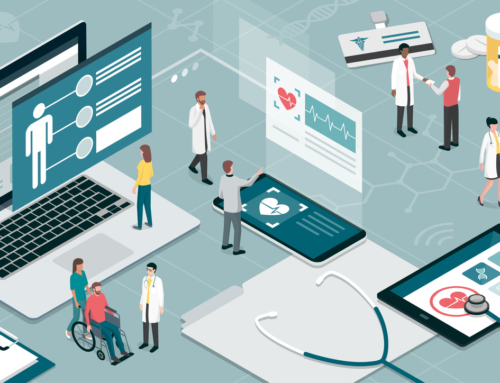As my compatriot, Sir Winston Churchill once said, “Never let a good crisis go to waste.”
The last couple of years have been surreal in terms of what we have all experienced during the pandemic. And while we are sensitive to the pain and suffering experienced by many, there has also been a lot of opportunity for digital transformation, particularly in the healthcare industry.
In this blog, we will highlight five positive outcomes from the pandemic, as well as five negative impacts, along with some interesting use cases.
Let’s begin with…
5 Negative Impacts of the Pandemic
At Bluedoor, we prefer to take the “glass half full” approach and look at these not as negatives but instead as opportunities for innovation:
1. Healthcare Workers Facing Burnout
According to a survey conducted by KFF/Washington Post, 3 in 10 frontline healthcare workers said the crisis took a toll on their mental health. The same survey reported that 62% of frontline healthcare workers said pandemic-induced worry and stress took a toll on their mental health with 49% saying it affected their physical health.1
2. Patients Forced to Punt Elective Procedures
In areas overwhelmed with Covid-19 patients, many hospitals have been forced to postpone treatments and surgeries for patients suffering from other serious conditions. When possible, many hospitals and physicians are trying to strike a balance between limiting or shuttering elective screenings and procedures versus keeping them to ensure those delays do not put their patients at risk.
3. Healthcare Inequities Even More Pronounced
The pandemic has cast a spotlight on many gaps in the healthcare system that were not visible before to the general public. One of these gaps is inequities in access to healthcare.
For example, according to KFF:
“Recent data from before the COVID-19 pandemic showed that people of color fared worse compared to their White counterparts across a range of health measures, including infant mortality, pregnancy-related deaths, prevalence of chronic conditions, and overall physical and mental health status. As of 2018, life expectancy among Black people was four years lower than White people, with the lowest expectancy among Black men. Research also documents disparities across other factors. For example, low-income people report worse health status than higher income individuals, and lesbian, gay, bisexual, and transgender (LGBT) individuals experience certain health challenges at increased rates.” 2
4. Misinformation Has Run Rampant
Alarmingly, many people have received and acted on information that is not based on scientific evidence, which has caused many to put themselves and others at risk.
According to KFF,
“78% of the public believes or is unsure about at least one false statement, and nearly a third believe at least four of eight false statements tested.” 3
5. Mental Health Issues Take Center Stage
Healthcare workers were not the only ones who saw an increase in mental health issues. According to KFF:
“The COVID-19 pandemic and the resulting economic recession have negatively affected many people’s mental health and created new barriers for people already suffering from mental illness and substance use disorders. During the pandemic, about 4 in 10 adults in the US have reported symptoms of anxiety or depressive disorder, a share that has been largely consistent, up from one in 10 adults who reported these symptoms from January to June 2019.” 4
Next, let’s turn our attention to…
5 Positive Pandemic Outcomes
1. Increase in Virtual Care Options for Both Clinicians and Patients
There is no doubt that the pandemic has been a catalyst for virtual care. According to the CDC, the number of telehealth visits increased by 50% in the first quarter of 2020 compared to the first quarter of 2019.5 McKinsey reports that the use of virtual care is 38 times higher than before the COVID-19 pandemic, and both providers and patients are happy with their experiences.6
See how Bluedoor partner, Hippo Technologies is helping ease caregiver capacity challenges with their voice-activated wearable computing solution for Clinician Extenders™.
2. Public Agencies Forced to Modernize
The pandemic certainly accelerated the digital transformation efforts of public agencies such as the NHS, and NIH, and forced clinical trials to decentralize – which in turn prompted the FDA to accelerate approvals for digital therapeutics and remote patient monitoring.
See how Bluedoor client, Huma, is helping to bring the hospital to the home and tackle waiting lists for the National Health Service (NHS) in the UK. Meanwhile, Castor is helping to democratize clinical research through their decentralized clinical trials platform.
3. Increase in People Thinking About their Health and Ways to Improve It
The pandemic gave people a lot of time to stop and reflect on what is most important in life. And many came to the realization that prevention through exercise and a healthier diet was something they should personally invest in.
To that end, Bluedoor partner, Wholistics Health, has launched a chatbot program that provides evidenced-based tips and guidance to promote engagement and sustained behavior change over time. Designed by behavioral health experts, the chatbot takes a holistic approach to guide activities of daily living to manage chronic conditions and enhance overall health and wellness.
4. Mental Health is in the Spotlight
As we discussed above, mental health is in the spotlight. And because mental health is being discussed more and more, the stigma around receiving mental health care is subsiding. And consequently, because the need is greater and in-person sessions are harder to access, telepsychiatry has become more readily available, making mental health care more accessible to those in need.
See how Bluedoor client, MindCare, has become a leading provider of round-the-clock telepsychiatry and behavioral health services to hospitals, emergency departments, outpatient clinics and correctional facilities, conducting more than 100,000 virtual visits a year.
5. Increased Innovation in Healthcare
The pandemic increased innovation in healthcare due to the fact that we were forced to break out of our traditional siloes and think differently about how to solve problems.
See how Bluedoor client, Infermedica, is making it easier to pre-diagnose, triage, and direct patients to appropriate medical services via their AI-enabled digital front door.
As we have illustrated above, there were many things that haven’t worked well during the pandemic. However, we have also seen some shining examples of those who have taken the opportunity to address these challenges head-on to not only innovate their business models, but more importantly, to save lives and help those in need leveraging digital health technologies.
With that being said, let’s end where we began, with a reminder and lesson to us all that we should…










